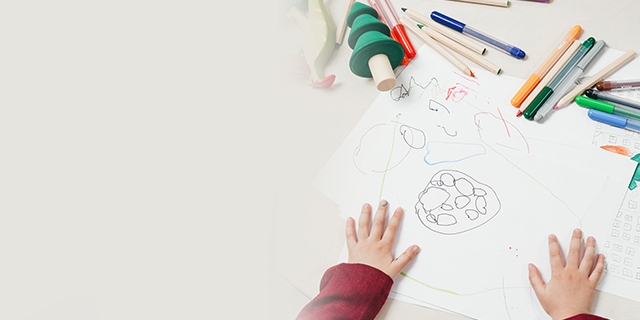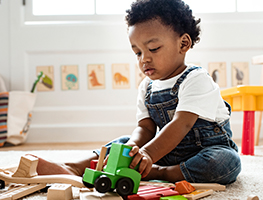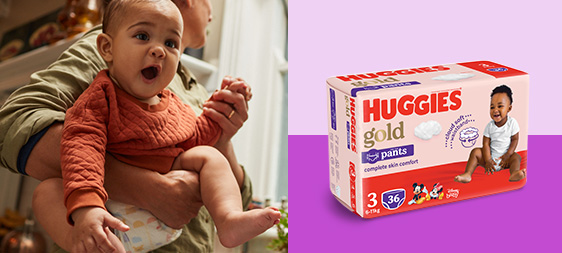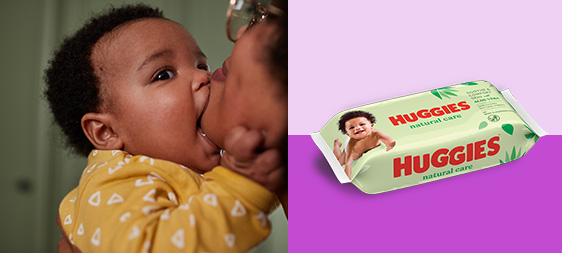As parents of young children, we’re excited by so many of their skills. From milestones like crawling and learning to using a spoon, putting on clothes and recognisable speech. But one that’s sometimes overlooked is their efforts in drawing. Yet, as you’ll see shortly, this skill is important for a huge range of developmental reasons. It’s also quiet, inexpensive and enjoyable!
When is my child likely to start?
Most children are ready to start their first scribbles between 12 and 18 months. By this stage they’re able to sit up without assistance, pick up an object in a fist and move it across a surface. They’re often still at the ‘taste everything they pick up’ stage – so make sure all their tools are non-toxic. Don’t worry too much about ‘starting them too early’ – your child will pick up a crayon when the time is right. All you need to do is provide the appropriate tools and opportunities.
First scribbles
It’s a really good idea to start with a large sheet of paper (e.g. butcher’s paper), sticky-taped to the floor. This makes it easier for their wide, exaggerated movements to stay on the page. Offer a single crayon – one that’s short and fat is easiest for a small hand to grip. They’ll hold it in a fist – many children hold crayons, pens and pencils this way until school age. Their movements will come from the shoulder or elbow with very little precision. But as your child moves the crayon back and forth, they’ll start to work out that they are causing the marks to appear; this discovery brings great joy.
Age 2 to 3
Around age 2 your toddler will start to move from random to controlled scribbles. Their fine motor skills (movements of wrists / hands / fingers) will also improve, and they’ll move on to an early ‘pencil’ grip. Now is a good time to add some more colours to their selection – toddlers love to show their autonomy by choosing which colour to use next. They’ll branch out from ‘pendulum-like’ left/right movements, to eventually include circular motions, lines, zig-zags, dots and crosses. Although they are unlikely to be ‘trying’ to draw a particular object, they may occasionally notice that a scribble reminds them of something – like the way adults ‘spot’ animal shapes in clouds.
Age 3 to 4
By age 3 drawing may change from simple ‘mark making’ to an attempt to represent something. A circle with two straight lines (for legs) commonly signifies a person. At this stage, many children will talk to themselves or others while drawing; some will start to ‘name’ their images. Most will begin to take notice of letters and will include them in drawings.
Age 4 to 5
At this stage, a young artist is still likely to choose colours at random (e.g. green sky) and objects will also be placed randomly. Yet some figures will be deliberately drawn larger to show their importance (e.g. a parent or pet). They’ll tend to draw most complex items in ‘x-ray style’- i.e. you’ll see the inside of a ‘house’ from the outside. They may also begin to tell stories with their drawings.
It’s really important to remember that, as with any guidelines to a child’s development, the stages above are an average – your child may move through them at a slower or faster rate depending on a range of factors, including how often and long they are able to draw.
How you can help
Research has found that the type of support you give is vital. It sounds really simple, but the best thing you can do, is just sit, watch and listen; showing interest as they draw and enjoys themselves. When you do ask a question or give encouragement, it’s better to focus on the effort than the outcome (you’ll find some examples below). Researchers have found asking questions such as ‘What is it?’ can lead to discouragement as your child may think they’ve failed to produce the ‘art’ you want. Comparing one child’s drawing with another’s can also be a problem. Often the ‘less successful’ child will try to imitate the ‘better artist’ – reducing their creativity – or simply giving up.
Positive feedback:
“You’ve been working hard. There are lots of dots on this drawing!”
“Is it fun moving the crayon round and round?”
“We’ll put this on the fridge, so Dad can see it when he gets home!”
“Let’s put this one in an envelope, and send it to Grandma!”
Less effective feedback:
“What’s that?” (“Tell me about your drawing” is better)
“You forgot the arms!”
“Try drawing your house like Johnny does…”
“No, the sky is blue. Here’s the blue crayon.”
Famous artists who started early
When encouraging your child to draw, you might wonder if they’re showing a particular talent. It’s possible, but more likely they’re simply enjoying a fun – and developmentally vital – activity. That said, some children will go on to greater artistic heights. Many of the world’s most famous artists started early. As a baby, Pablo Picasso’s first word was ‘pencil’ – not a surprise as both his parents were artists. 8-year-old Henri de Toulouse-Lautrec drew sketches and caricatures in his exercise workbooks. And at age 10, an enterprising Claude Monet sold his charcoal caricatures to local people.
Drawing may boost many other skills in your child
Many studies have been done to investigate the influence a child’s ability to draw has on the rest of their development. One such a study found that kindergarten children’s ability to draw were in relation to their ability to write the alphabet.
So, the more they draw the better for them – they may just end up being more creative and have better writing skills than other children their age!
Drawing has also been linked to a child’s speaking skills. Children’s ability to draw was linked to their ability to quickly name objects. Many children appear to enjoy drawing with their peers and discussing what they’re creating. Some experts suggest this teaches them social skills. Others suggest that drawing and the ensuing talk between children or with adults helps the development of writing skills.



























